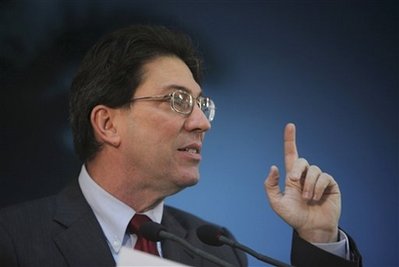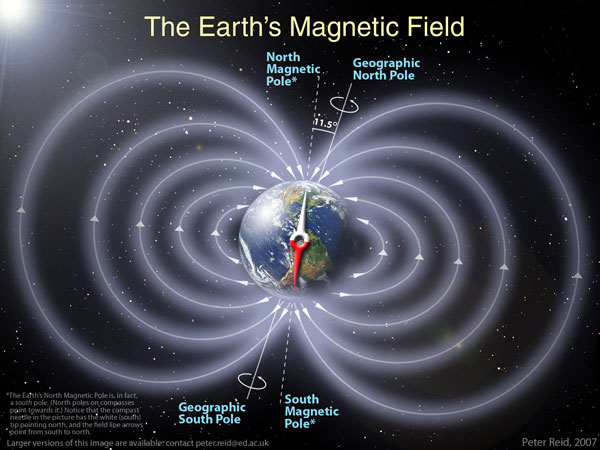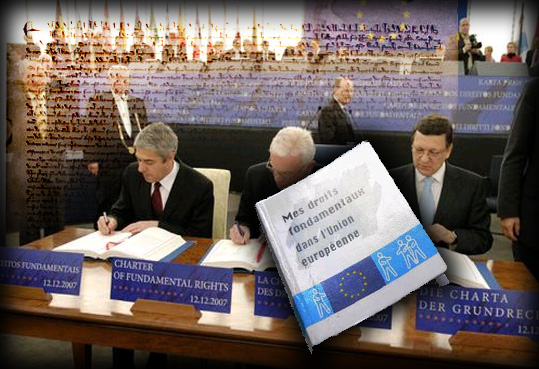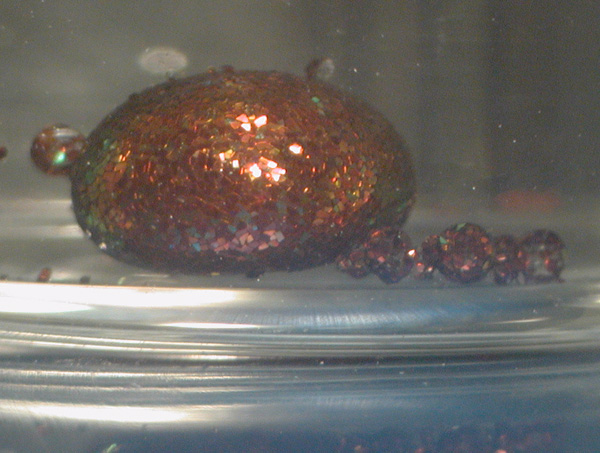November 30, 2009
by John Noble WilfordBefore the glory that was Greece and Rome, even before the first cities of Mesopotamia or temples along the Nile, there lived in the Lower Danube Valley and the Balkan foothills people who were ahead of their time in art, technology and long-distance trade.
For 1,500 years, starting earlier than 5000 B.C., they farmed and built sizable towns, a few with as many as 2,000 dwellings. They mastered large-scale copper smelting, the new technology of the age. Their graves held an impressive array of exquisite headdresses and necklaces and, in one cemetery, the earliest major assemblage of gold artifacts to be found anywhere in the world.
The striking designs of their pottery speak of the refinement of the culture’s visual language. Until recent discoveries, the most intriguing artifacts were the ubiquitous terracotta “goddess” figurines, originally interpreted as evidence of the spiritual and political power of women in society.
New research, archaeologists and historians say, has broadened understanding of this long overlooked culture, which seemed to have approached the threshold of “civilization” status. Writing had yet to be invented, and so no one knows what the people called themselves. To some scholars, the people and the region are simply Old Europe.
The little-known culture is being rescued from obscurity in an exhibition, “The Lost World of Old Europe: the Danube Valley, 5000-3500 B.C.,” which opened last month at the Institute for the Study of the Ancient World at New York University. More than 250 artifacts from museums in Bulgaria, Moldova and Romania are on display for the first time in the United States. The show will run through April 25.
At its peak, around 4500 B.C., said David W. Anthony, the exhibition’s guest curator, “Old Europe was among the most sophisticated and technologically advanced places in the world” and was developing “many of the political, technological and ideological signs of civilization.”
Dr. Anthony is a professor of anthropology at Hartwick College in Oneonta, N.Y., and author of “The Horse, the Wheel, and Language: How Bronze-Age Riders from the Eurasian Steppes Shaped the Modern World.” Historians suggest that the arrival in southeastern Europe of people from the steppes may have contributed to the collapse of the Old Europe culture by 3500 B.C.
At the exhibition preview, Roger S. Bagnall, director of the institute, confessed that until now “a great many archaeologists had not heard of these Old Europe cultures.” Admiring the colorful ceramics, Dr. Bagnall, a specialist in Egyptian archaeology, remarked that at the time “Egyptians were certainly not making pottery like this.”
A show catalog, published by Princeton University Press, is the first compendium in English of research on Old Europe discoveries. The book, edited by Dr. Anthony, with Jennifer Y. Chi, the institute’s associate director for exhibitions, includes essays by experts from Britain, France, Germany, the United States and the countries where the culture existed.
Dr. Chi said the exhibition reflected the institute’s interest in studying the relationships of well-known cultures and the “underappreciated ones.”
Although excavations over the last century uncovered traces of ancient settlements and the goddess figurines, it was not until local archaeologists in 1972 discovered a large fifth-millennium B.C. cemetery at Varna, Bulgaria, that they began to suspect these were not poor people living in unstructured egalitarian societies. Even then, confined in cold war isolation behind the Iron Curtain, Bulgarians and Romanians were unable to spread their knowledge to the West.
The story now emerging is of pioneer farmers after about 6200 B.C. moving north into Old Europe from Greece and Macedonia, bringing wheat and barley seeds and domesticated cattle and sheep. They established colonies along the Black Sea and in the river plains and hills, and these evolved into related but somewhat distinct cultures, archaeologists have learned. The settlements maintained close contact through networks of trade in copper and gold and also shared patterns of ceramics.
The Spondylus shell from the Aegean Sea was a special item of trade. Perhaps the shells, used in pendants and bracelets, were symbols of their Aegean ancestors. Other scholars view such long-distance acquisitions as being motivated in part by ideology in which goods are not commodities in the modern sense but rather “valuables,” symbols of status and recognition.
Noting the diffusion of these shells at this time, Michel Louis Seferiades, an anthropologist at the National Center for Scientific Research in France, suspects “the objects were part of a halo of mysteries, an ensemble of beliefs and myths.”
In any event, Dr. Seferiades wrote in the exhibition catalog that the prevalence of the shells suggested the culture had links to “a network of access routes and a social framework of elaborate exchange systems — including bartering, gift exchange and reciprocity.”
Over a wide area of what is now Bulgaria and Romania, the people settled into villages of single- and multiroom houses crowded inside palisades. The houses, some with two stories, were framed in wood with clay-plaster walls and beaten-earth floors. For some reason, the people liked making fired clay models of multilevel dwellings, examples of which are exhibited.
A few towns of the Cucuteni people, a later and apparently robust culture in the north of Old Europe, grew to more than 800 acres, which archaeologists consider larger than any other known human settlements at the time. But excavations have yet to turn up definitive evidence of palaces, temples or large civic buildings. Archaeologists concluded that rituals of belief seemed to be practiced in the homes, where cultic artifacts have been found.
The household pottery decorated in diverse, complex styles suggested the practice of elaborate at-home dining rituals. Huge serving bowls on stands were typical of the culture’s “socializing of food presentation,” Dr. Chi said.
At first, the absence of elite architecture led scholars to assume that Old Europe had little or no hierarchical power structure. This was dispelled by the graves in the Varna cemetery. For two decades after 1972, archaeologists found 310 graves dated to about 4500 B.C. Dr. Anthony said this was “the best evidence for the existence of a clearly distinct upper social and political rank.”
Vladimir Slavchev, a curator at the Varna Regional Museum of History, said the “richness and variety of the Varna grave gifts was a surprise,” even to the Bulgarian archaeologist Ivan Ivanov, who directed the discoveries. “Varna is the oldest cemetery yet found where humans were buried with golden ornaments,” Dr. Slavchev said.
More than 3,000 pieces of gold were found in 62 of the graves, along with copper weapons and tools, and ornaments, necklaces and bracelets of the prized Aegean shells. “The concentration of imported prestige objects in a distinct minority of graves suggest that institutionalized higher ranks did exist,” exhibition curators noted in a text panel accompanying the Varna gold.
Yet it is puzzling that the elite seemed not to indulge in private lives of excess. “The people who donned gold costumes for public events while they were alive,” Dr. Anthony wrote, “went home to fairly ordinary houses.”
Copper, not gold, may have been the main source of Old Europe’s economic success, Dr. Anthony said. As copper smelting developed about 5400 B.C., the Old Europe cultures tapped abundant ores in Bulgaria and what is now Serbia and learned the high-heat technique of extracting pure metallic copper.
Smelted copper, cast as axes, hammered into knife blades and coiled in bracelets, became valuable exports. Old Europe copper pieces have been found in graves along the Volga River, 1,200 miles east of Bulgaria. Archaeologists have recovered more than five tons of pieces from Old Europe sites.
An entire gallery is devoted to the figurines, the more familiar and provocative of the culture’s treasures. They have been found in virtually every Old Europe culture and in several contexts: in graves, house shrines and other possibly “religious spaces.”
One of the best known is the fired clay figure of a seated man, his shoulders bent and hands to his face in apparent contemplation. Called the “Thinker,” the piece and a comparable female figurine were found in a cemetery of the Hamangia culture, in Romania. Were they thinking, or mourning?
Many of the figurines represent women in stylized abstraction, with truncated or elongated bodies and heaping breasts and expansive hips. The explicit sexuality of these figurines invites interpretations relating to earthly and human fertility.
An arresting set of 21 small female figurines, seated in a circle, was found at a pre-Cucuteni village site in northeastern Romania. “It is not difficult to imagine,” said Douglass W. Bailey of San Francisco State University, the Old Europe people “arranging sets of seated figurines into one or several groups of miniature activities, perhaps with the smaller figurines at the feet or even on the laps of the larger, seated ones.”
Others imagined the figurines as the “Council of Goddesses.” In her influential books three decades ago, Marija Gimbutas, an anthropologist at the University of California, Los Angeles, offered these and other so-called Venus figurines as representatives of divinities in cults to a Mother Goddess that reigned in prehistoric Europe.
Although the late Dr. Gimbutas still has an ardent following, many scholars hew to more conservative, nondivine explanations. The power of the objects, Dr. Bailey said, was not in any specific reference to the divine, but in “a shared understanding of group identity.”
As Dr. Bailey wrote in the exhibition catalog, the figurines should perhaps be defined only in terms of their actual appearance: miniature, representational depictions of the human form. He thus “assumed (as is justified by our knowledge of human evolution) that the ability to make, use and understand symbolic objects such as figurines is an ability that is shared by all modern humans and thus is a capability that connects you, me, Neolithic men, women and children, and the Paleolithic painters in caves.”
Or else the “Thinker,” for instance, is the image of you, me, the archaeologists and historians confronted and perplexed by a “lost” culture in southeastern Europe that had quite a go with life back before a single word was written or a wheel turned.
Source: http://www.nytimes.com





